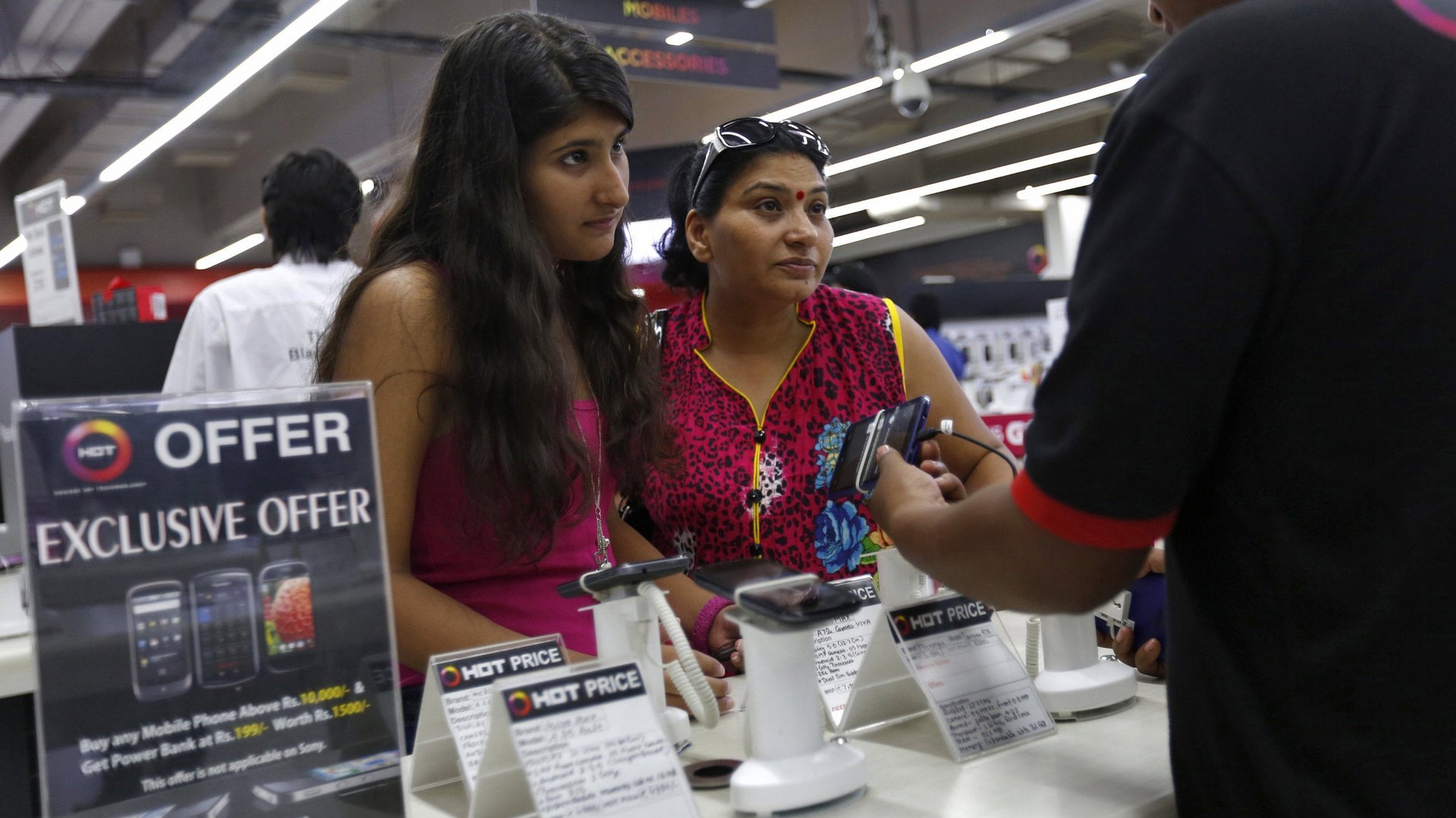The economics of selling expensive phones to rich people in poor countries
The standard narrative about mobile in the poor world is one of ever-cheaper phones for more and more people. This is broadly true. But there are rich people in the poor world too, and for them, the economics of phones are reversed.


The standard narrative about mobile in the poor world is one of ever-cheaper phones for more and more people. This is broadly true. But there are rich people in the poor world too, and for them, the economics of phones are reversed.
The iPhone 5s, the high-end version of Apple’s latest phone, finally came to India on Nov. 1, two days before the country’s biggest holiday, Diwali. Local prices for the phone started at Rs 53,500 ($841) for the cheapest version with 16GB of memory, well above the US retail price of $649, and went all the way up to Rs 71,500 for the most expensive model—a $275 premium over American stores. Yet the phone was sold out within 24 hours. (The fact that there were only 6,000 units nationwide may have helped.)
Perhaps encouraged by the demand, Apple foresees Indian sales for the 5s at Rs 10 billion ($157 million) in the three months to the end of December, the Economic Times reports, citing sources at Apple’s “trade partners,” presumably distributors. That would be twice the value of iPhone 5 sales last year, the paper reports, calculating that Apple would need to sell roughly 200,000 of the 16GB version of the 5s to hit the target.
That may not sound like a huge number compared to global sales of the 5s and its lower-end cousin, the 5c, which together hit 9 million over the opening weekend. Indeed, it is not even a very large number within India’s smartphone market, which doubled from 5 million in the last quarter of 2012 to 10 million in the second quarter of this year, the latest for which figures are available. But it sounds about right given that less than 4% of India’s 1.2 billion people live on more than $5 a day.
More brains than money
Yet even for the rich folks who can afford it, Apple’s phones are getting ever pricier. Last weekend Rajeev Makhni, an Indian tech journalist, looked at the way smartphones are priced in India. Three years ago, he says, top-of-the-line smartphones cost no more than Rs 30,000. The iPhone 4S breached that barrier at Rs 40,000. By last year high-end phones routinely hit Rs 50,000, and now, with the 5s, the high watermark has crossed Rs 70,000. By contrast, Google’s Nexus 5 retails at Rs 28,000. The implication is that even in a segment of the market that should be keen to splash out, the price difference is too jarring to ignore.
Yet in reality these numbers mean very little, Makhni points out:
The new mantra for every company is to announce a phone at a price of around 50K, a street or market price that is much lower, and then have that price drop drastically every few weeks. Once again, the only company that doesn’t follow that diktat is our old friend Apple. Prices remain steady as long as that product remains the flagship offering. That changed last year when Apple came up with some aggressive ‘smartphone exchange’, ‘EMI schemes’ and other mechanisms camouflaged to not look like discounting.
It’s a kind of institutionalized haggling: Start with a ridiculously high number and then knock it down as demand falls. Indeed, newspapers are filled with advertisements for sales on smartphones. But even Apple, while keeping its sticker prices high to retain its image, must find ways to compete. The result, as Makhni writes and as Quartz has noted earlier, is that it goes to great lengths to make its devices affordable without appearing to—for instance by offering buy-backs and zero-interest financing schemes. It’s the high price that makes the phone desirable, but it’s the savings that move it off the shelves.
It is the exact opposite of how to sell cheap phones to poor people. And it also means that Apple may have to sell a lot more than 200,000 devices to hit its target for this quarter.